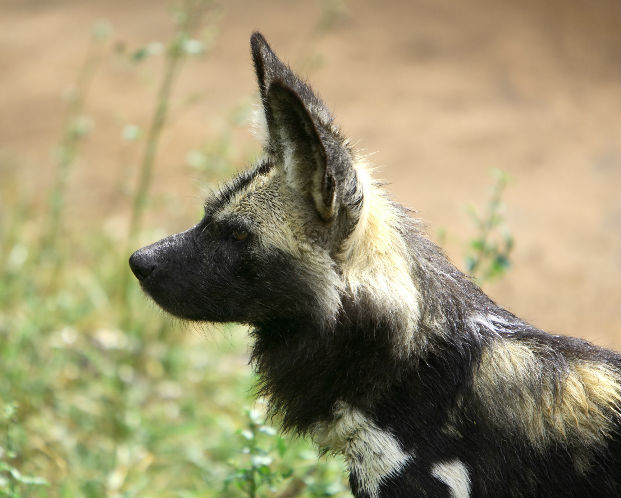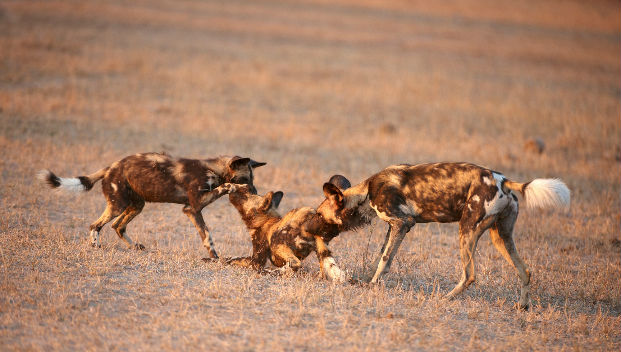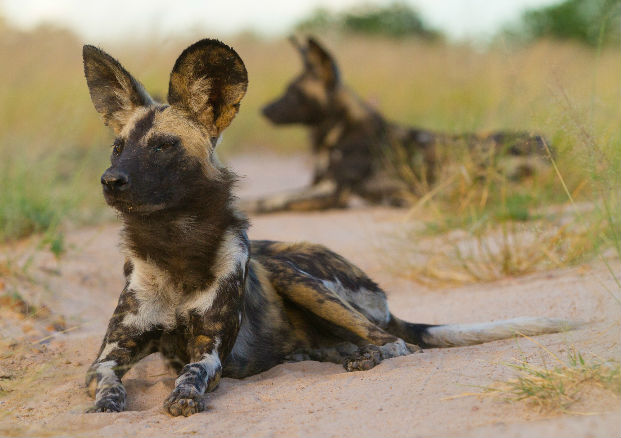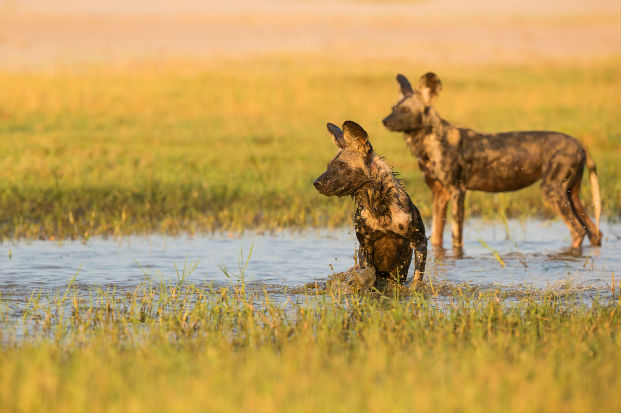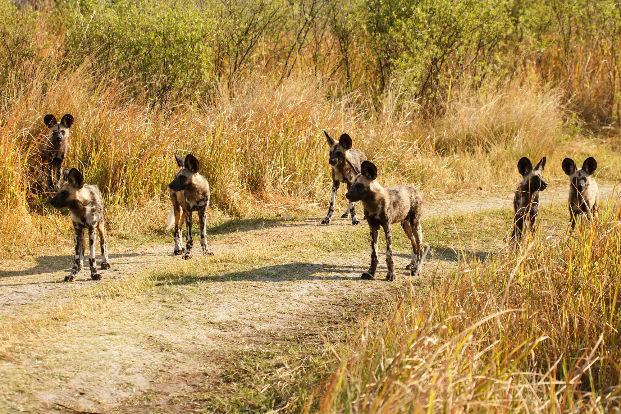Wild dogs live in packs of between 10 and 25, sometimes 40. These packs are dominated by an alpha pair with one of the two taking on the role of leader. Usually only the alpha pair breeds with the other dogs supporting their effort through hunting and bringing food back for the lactating female and the pups. Without this support a mated pair will not be able to raise the pups. With only 6,000 wild dogs in Africa it is only second to the Ethiopian wolf as Africa’s most endangered carnivore. Wild dogs are susceptible to diseases such as canine distemper and rabies. Pups also fall prey to hyena. Their requirement of large territories make it challenging from a conservation perspective.
Vote for the fact you find most fascinating
To prevent other animals from stealing their kill wild dogs will eat their prey incredibly quickly. For example a pack of nine dogs can finish a kudu in 15 minutes.
Wild dogs are Africa’s version of the wolf. The scientific name Lycaon pictus means “painted wolf”.
Wild dogs have developed large stomachs to transport food back to the den. They then regurgitate it for the pups and stay at home dogs. They can do this for great distances so long as they don’t rest. At that point the digestive process will begin.
Wild dogs are such effective hunters they are able to have regular breakfast and dinner times.
Wild dogs run their prey to exhaustion, during which they reach a top speed of 65 kph, but they can only keep this up for a short distance. They then slow to 48 kph which they can manage for 5 km. However, most chases are over within 2 km.
Wild dogs kill their prey by ripping out their heart and lungs. This disembowelment is a quick way for the animal to die.
Rather than allowing precious water to evaporate wild dogs will instead allow their body temperature to rise above the ambient temperature and therefore lose heat to the environment.
In some reserves such as Pilansberg National Park wild dogs have developed hunting strategies that utilise man-made objects such as boundary fences into which they chase antelopes into.



